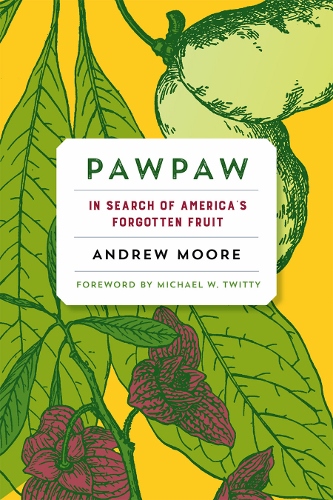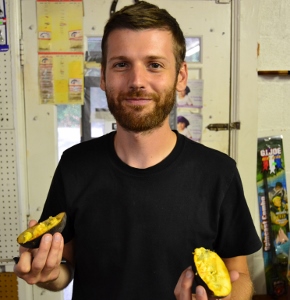Reconnecting with Pawpaws, America’s Forgotten Fruit
A new book delves into the long history of the best American fruit you never tasted
If you’ve never heard of the pawpaw fruit, you’re not alone. Believe it or not, the large, tropical fruit is native to North America, and the trees still grow wild in clusters along some riverbanks. Although pawpaws have a long history and a cult following, they haven’t quite made it into the produce mainstream. Andrew Moore caught the pawpaw bug after learning about the mysterious fruit and, more importantly, tasting it. This led to much foraging, research, and travel as he wrote his new book, Pawpaw: In Search of America’s Forgotten Fruit. Paste talked to Moore about this unlikely American fruit, and why you might be hearing it’s rhythmic name more often in the future.
Paste: Can you describe pawpaws for those of us not lucky enough to have eaten one?
AM: Pawpaws are often described as tasting like a cross between a mango and a banana, with a custard-like texture. It’s truly a tropical flavor and texture—unlike anything else you’ll encounter in our American woods. And as a pawpaw ripens, its mild flavor intensifies, becoming sweeter and more caramel-like. As I’ve eaten more pawpaws—including a wide variety of named cultivars—I’ve had pawpaws that taste like melon, vanilla custard, coconut, and a host of other flavors.
Unripe pawpaws, hanging from the trees, strongly resemble green mangoes. The fruits’ floral and sweet and, yes, tropical scent, comes on as the fruit ripens. Occasionally fruit will turn yellow. Finally, if a pawpaw has dropped to the ground, or once it’s sitting on your kitchen counter, bruised fruit will blacken to various shades of gray and purple, yet its pulp remains edible.
Paste: Where can they be found?
AM: Wild pawpaws can be found in approximately 26 eastern States, from the Atlantic to Nebraska, and from Louisiana to Ontario, Canada. But in recent years, gardeners and small farmers have begun to push those boundaries, and cultivated pawpaws can now be found in California, Oregon, the upper Midwest and New England. (And I should mention eastern and western Europe, China, and now Korea.)
Paste: You write about the long history of pawpaws in your book—what stands out to you?
AM: Pawpaws do have a long history. They were here long before humans arrived—up to 56 million years ago—and were eaten and dispersed by the continent’s now-extinct megafauna. Native Americans ate pawpaws and cooked or stored them in a variety of ways, but those preparations are now largely lost to history. Pawpaws were also eaten and encountered by the earliest European explorers, from Hernando de Soto and the Jamestown settlers, to Lewis and Clark and Daniel Boone. They were eaten on the Appalachian frontier, by escaped slaves on the Underground Railroad, and during the Civil War pawpaws sustained both Union and Confederate soldiers.

Paste: Were pawpaws domesticated on any notable level? What about now?

